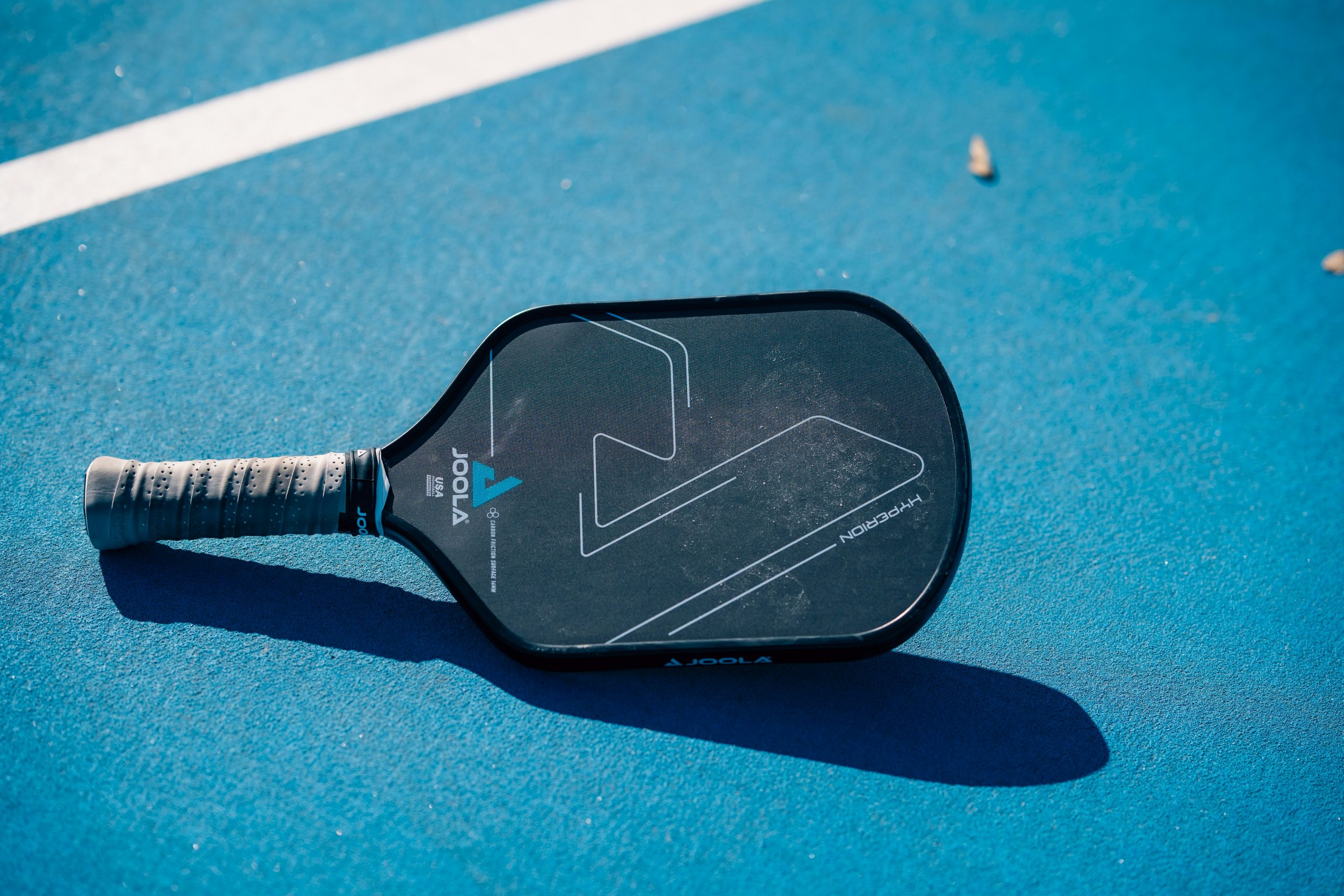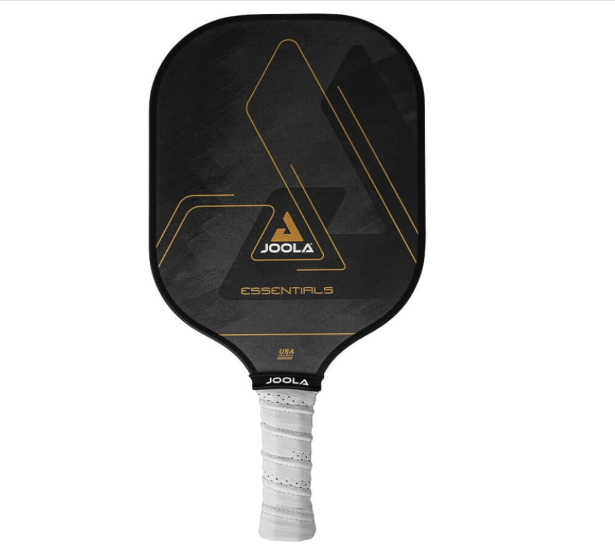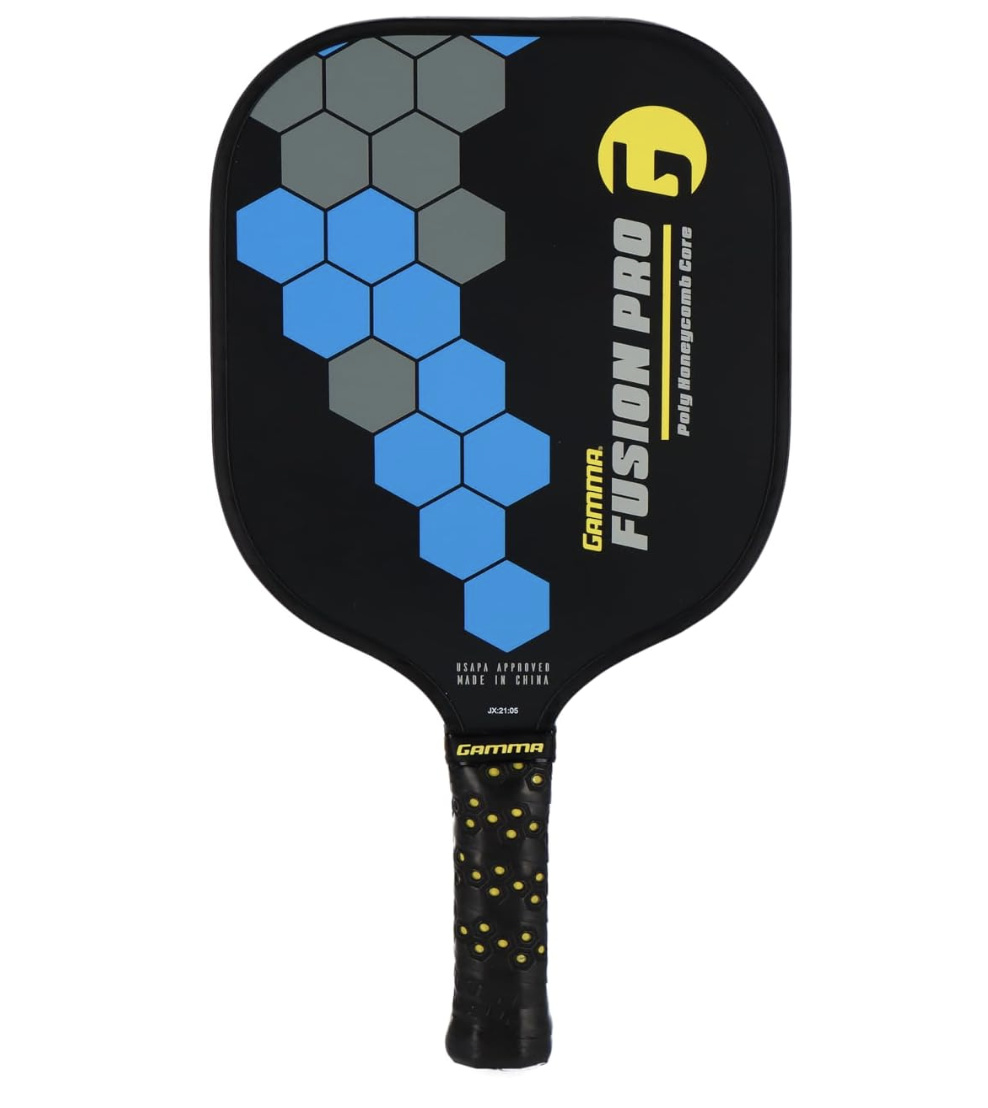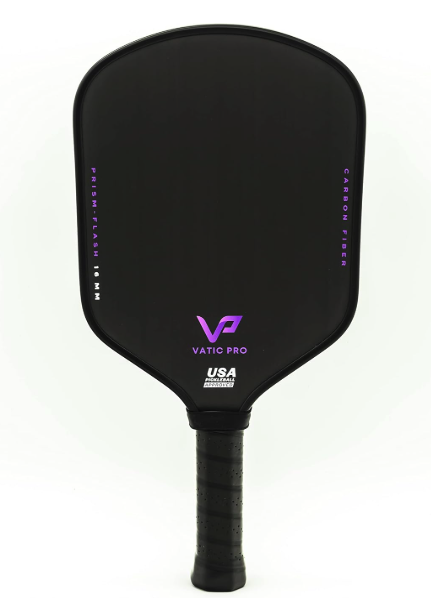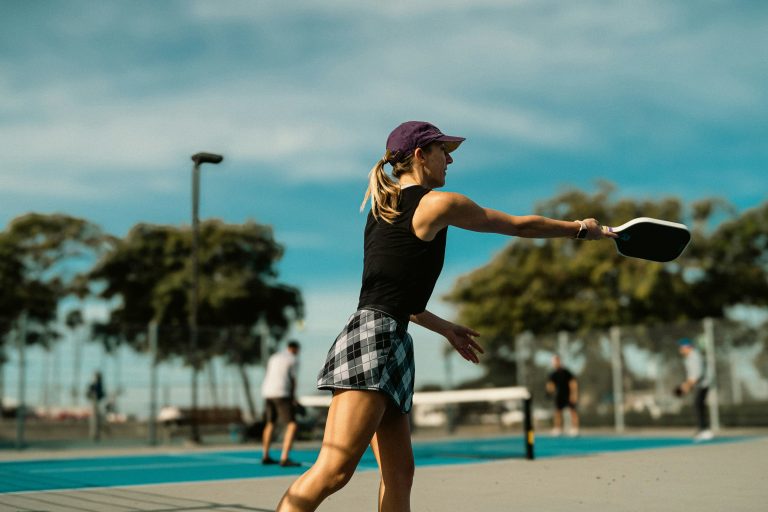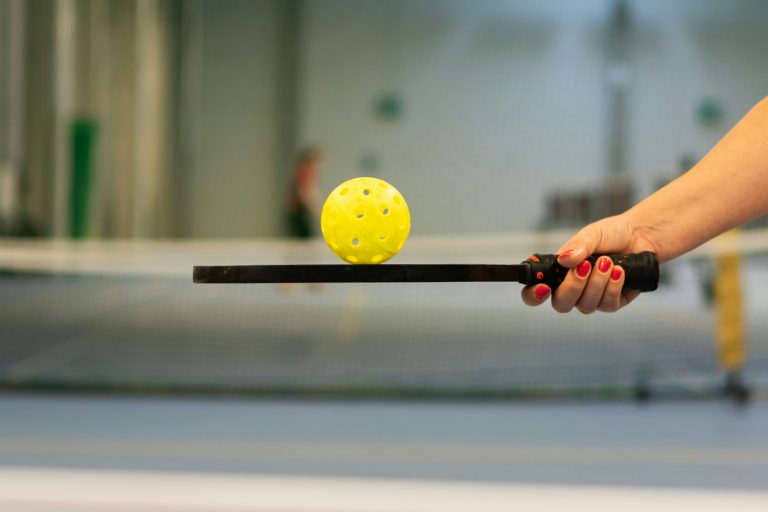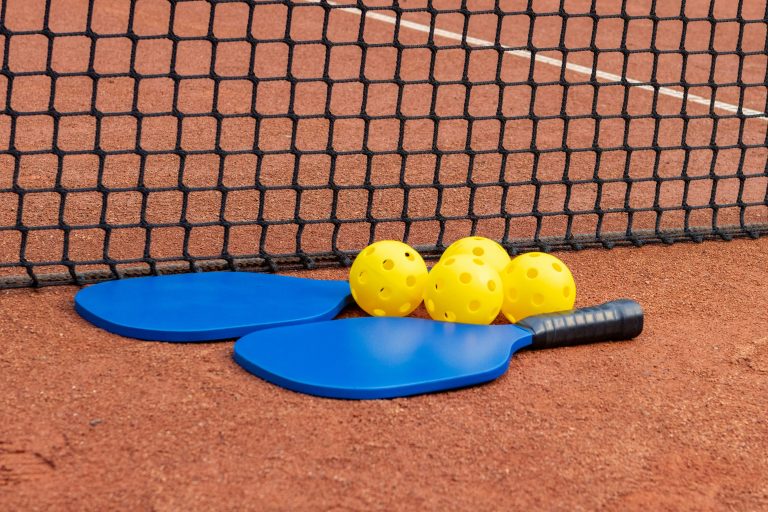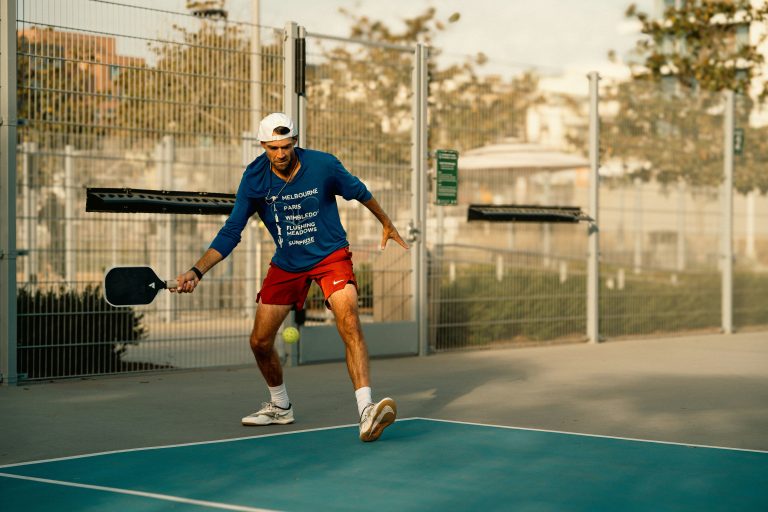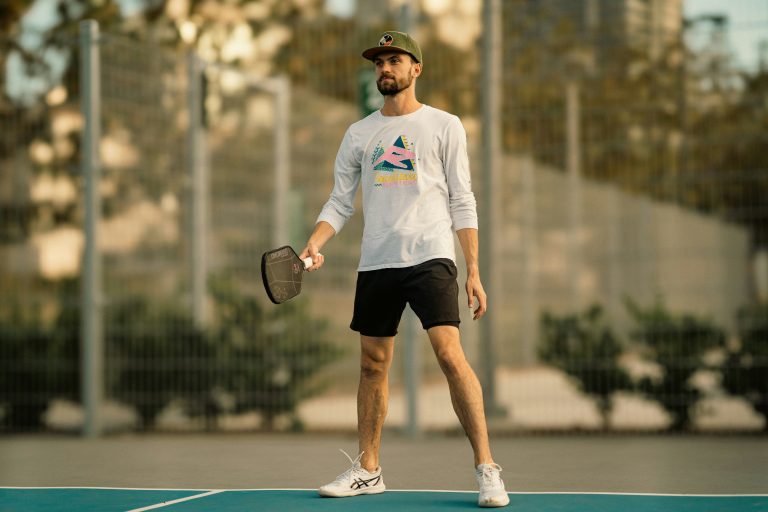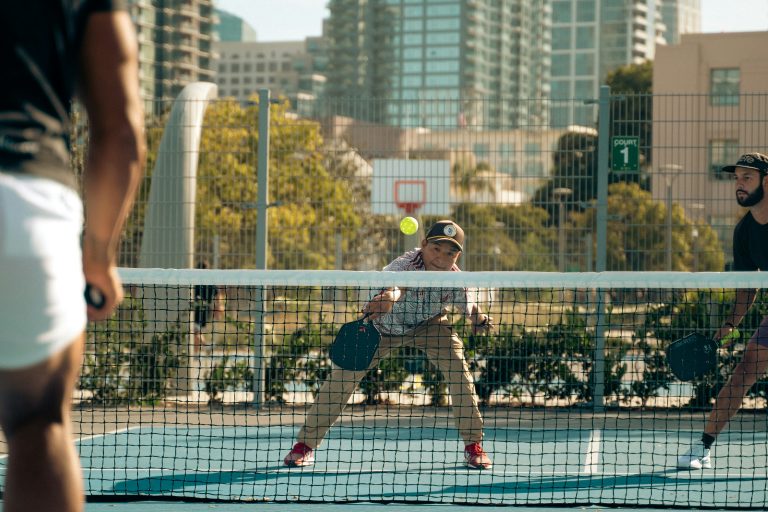Graphite vs Carbon Fiber Pickleball Paddles — Which Is Better in 2025?
Updated July 2025
If you’re shopping for a new pickleball paddle and stuck between graphite and carbon fiber, you’re not alone. On paper, they might sound similar, both lightweight, both “advanced”, but on the court? Big differences.
This guide breaks down what each material actually means for your game in 2025. We’ll compare pop, control, spin, weight, feel, and price, then help you choose the right paddle for your playing style. No fluff. No hype. Just honest insight from someone who’s made the mistake of buying the wrong paddle… twice.
Graphite vs. Carbon Fiber: What’s the Real Difference?
Materials & Manufacturing
Let’s clear this up first: graphite and carbon fiber are not the same thing.
- Graphite is typically used as a thin coating on the paddle face. It’s light, smooth, and known for quick response.
- Carbon fiber, on the other hand, is woven into sheets and pressed into the paddle’s surface. It’s stiffer, more textured, and more durable long term.
So while both come from carbon-based materials, carbon fiber is stronger, more rigid, and creates better ball contact.
Durability and Surface Texture
Graphite paddles tend to feel “slicker,” with a polished finish. They’re not fragile, but over time, the coating can wear—especially if you’re playing outdoors or scuffing it up during dinks gone wrong.
Carbon fiber surfaces usually have a textured finish. That texture grips the ball better (more on that below), and the material doesn’t wear down as easily.
Common Use Cases for Each
Carbon Fiber: Designed for spin heavy, aggressive players who want power and precision—especially in singles or competitive doubles.
Graphite: Best for players who like finesse, control, and quick hands at the net.
Side-by-Side Comparison: Graphite vs. Carbon Fiber
✅ Power & Pop
- Graphite: Light and snappy, but lacks punch on deep drives.
- Carbon Fiber: Stiffer face = more energy return = serious pop when you need it.
Winner: Carbon fiber, hands down.
✅ Control & Soft Game
- Graphite: Easier to control, especially for soft dinks and resets.
- Carbon Fiber: Still precise, but stiffer feel can be less forgiving if your technique is off.
Winner: Graphite (especially for beginners/intermediates).
✅ Spin Potential
- Graphite: Some grip, but mostly smooth.
- Carbon Fiber: Textured surface grabs the ball = more topspin, more slice.
Winner: Carbon fiber by a mile.
✅ Weight & Maneuverability
- Both materials are light, but graphite paddles tend to be slightly lighter overall—often 7.5–7.8 oz.
- Carbon fiber paddles are typically 7.8–8.4 oz, with more head weight.
Winner: Tie. Depends on model, but graphite is usually faster in the hand.
✅ Feel & Feedback
- Graphite: Softer, more cushioned feel. Great for fast hands and quick touches.
- Carbon Fiber: Crisp, connected feel with more feedback on every shot.
Winner: Depends on taste. Graphite = plush. Carbon fiber = precise.
✅ Price & Value in 2025
- Graphite paddles: Typically $50–$120
- Carbon fiber paddles: Usually $110–$220 (some go way higher)
Winner: Graphite, if budget is a concern.
Who Should Use Graphite Pickleball Paddles?
Lightweight Feel, Quicker Hands
Graphite paddles are perfect for doubles players who want to dominate the kitchen line. They’re fast, maneuverable, and won’t wear you out after a long session.
Ideal for Fast Reactions & Control
If your game is built on hand speed and soft hands—not full-court drives—you’ll love how graphite responds. It helps with resets, digs, and third-shot drops.
Popular Among Casual and Intermediate Players
They’re more forgiving and budget-friendly. If you’re still dialing in your technique or playing socially, graphite gets the job done—without hurting your wallet.
Who Should Use Carbon Fiber Pickleball Paddles?
Textured Surface for Spin & Power
If you love adding spin to your serves, drops, or roll volleys, carbon fiber gives you that extra grip on the ball. It bites harder, especially on raw carbon paddles.
Great for Players Advancing to Competitive Levels
Intermediate to advanced players love carbon fiber because it rewards good form. The pop is real, and the paddle becomes an extension of your arm on fast-paced exchanges.
Stiffer Feel, More Ball Feedback
If you want to feel the ball on every strike and don’t mind a slightly firmer response, carbon fiber gives you that tactile edge.
Top Graphite & Carbon Fiber Paddles in 2025
Graphite Picks
Joola Essentials Pro
- Why It’s Here: A fantastic entry-level paddle with a graphite face and polymer core. Light, fast, and easy to control. Great bang-for-your-buck control paddle under $70.
- Specs:
- Face: Graphite
- Weight: 8.2 oz
- Core: Honeycomb polymer
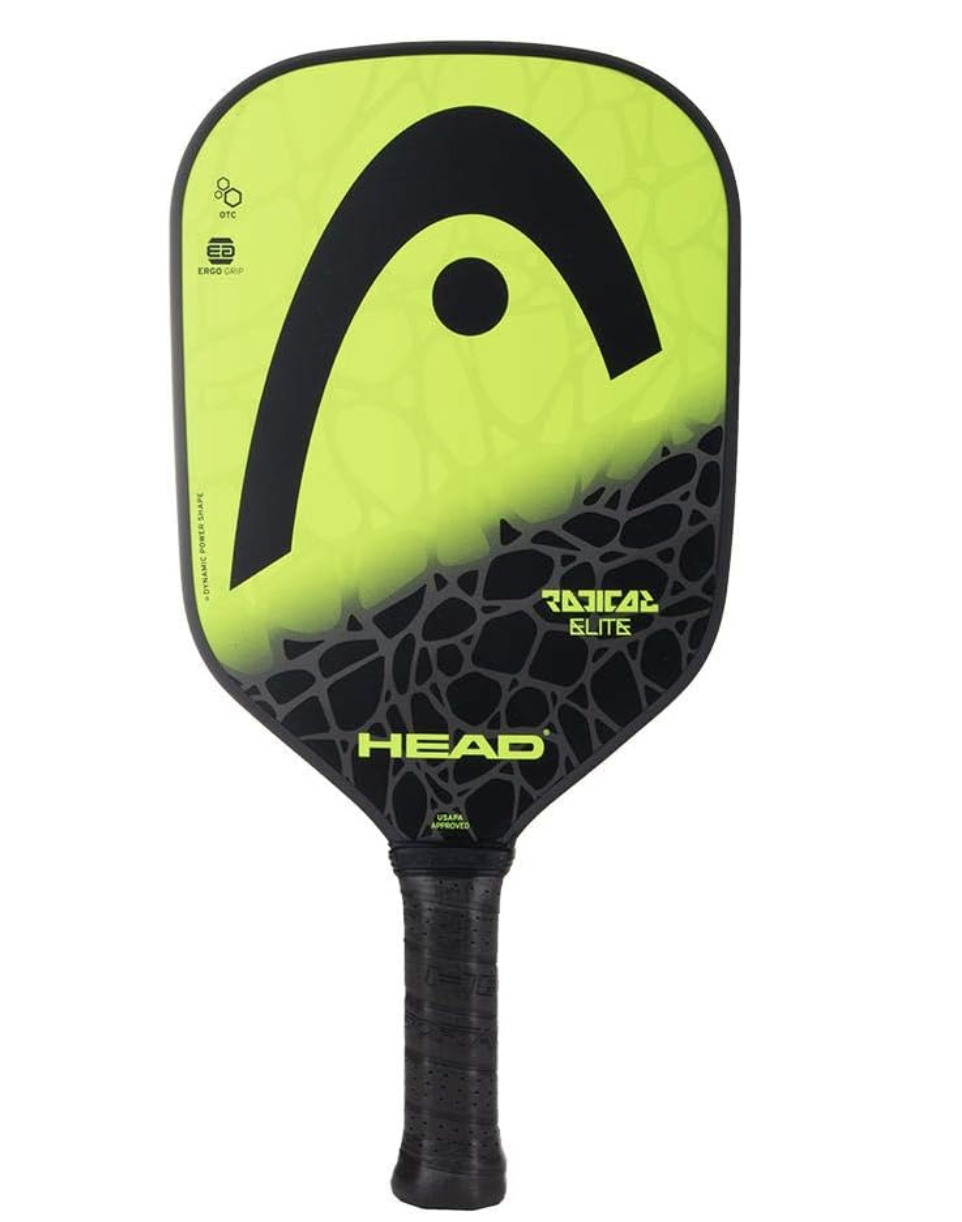
Head Radical Elite
- Why It’s Here: Budget-friendly graphite option with a comfortable grip and predictable touch. Why it’s here: Reliable for casual players, especially those with arm sensitivity.
- Specs:
- Face: Graphite composite
- Weight: 8.1 oz
- Core: Polymer
Gamma Fusion Pro
- Why It’s Here: The Joola Essentials is a sweat-proof, summer-ready paddle perfect for casual or competitive players. Its fiberglass surface absorbs shock while maintaining comfort. Ideal for long rallies or humid conditions where grip and forgiveness matter.
- Specs:
- Weight: 8.2 oz
- Core: Response Polymer
- Surface: Fiberglass
- Grip: Sure-Grip perforated
Carbon Fiber Picks
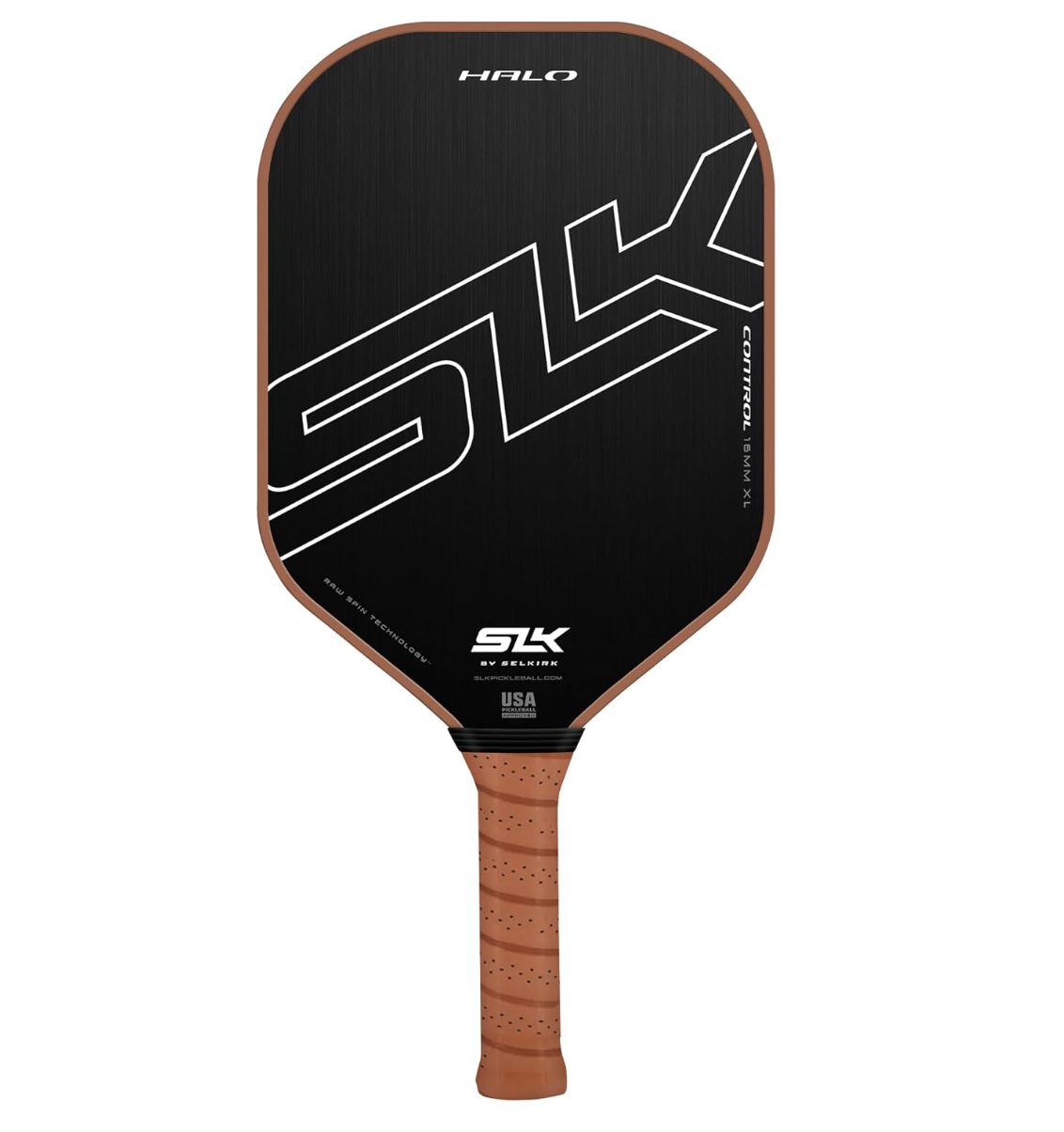
Selkirk SLK Halo Control
- Why It’s Here: Pro-style paddle with a raw carbon face and foam edge for shock absorption. One of the best all-around carbon paddles for spin and soft game.
- Specs:
- Face: T700 Raw Carbon Fiber
- Weight: 7.9–8.2 oz
- Core: Rev-Core+ polymer
Vatic Pro Prism Flash
- Why It’s Here: New player favorite with thermoformed body and clean carbon face. A rising star that delivers elite feel at an affordable price.
- Specs:
- Face: Raw carbon fiber
- Weight: 8.0 oz
- Core: Polypropylene
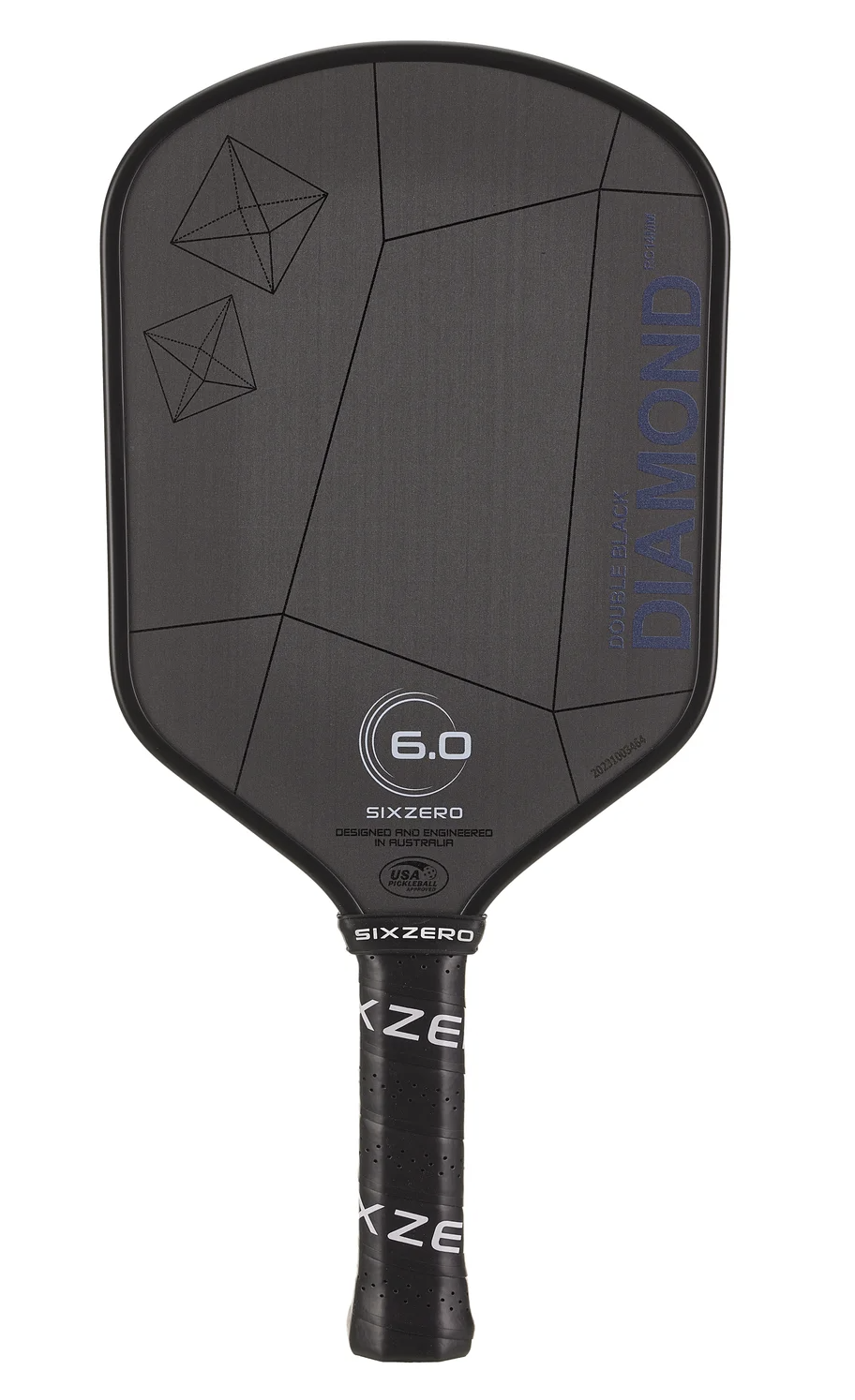
Six Zero Double Black Diamond
- Why It’s Here: Elite performance paddle with spin, pop, and plush control. Combines spin, power, and shock absorption in a sleek design.
- Specs:
- Face: T700 carbon fiber
- Weight: 8.1 oz
- Core: Edge-foam thermoformed poly
Final Verdict: Which Should You Choose?
Graphite = Lightweight control, lower price
- Great for finesse and quick hands
- Ideal for beginners and casual players
- Easier on the budget
Carbon Fiber = Spin, power, pro-level performance
- Best for advanced technique and aggressive play
- Higher cost, but higher ceiling
- Feels more “connected” to the ball
Pick based on your style — not hype
If you play fast hands at the net? Graphite might be your best friend. But if you’re getting serious about spin and placement, or just want more edge on your shots, carbon fiber is where the magic happens.
Want more gear picks? Check out:
Best Paddles for Intermediate Players
Best Pickleball Paddles for Spin (2025)
How to Choose the Right Pickleball Paddle
FAQ: Graphite vs. Carbon Fiber Pickleball Paddles
Which is better: graphite or carbon fiber pickleball paddles?
It depends. Graphite paddles are typically lighter and offer better control. Carbon fiber paddles provide more spin and pop due to textured surfaces and stiffer face materials.
Are carbon fiber paddles worth the higher price?
Yes, for players focused on spin and power. Carbon fiber surfaces grab the ball better and last longer, but casual players may not need the upgrade.
Is graphite the same as carbon fiber?
No. Graphite is a form of carbon but typically used as a coating. Carbon fiber weaves offer more strength and stiffness with better ball feedback.
Can beginners use carbon fiber paddles?
They can, but it might be overkill. Beginners often benefit more from graphite or composite paddles that are lighter and easier to handle
Do carbon fiber paddles have more spin?
Yes. The textured face of carbon fiber paddles creates more friction with the ball, giving players more spin on drives and drops.

